
Fujifilm’s latest round of Techno-Stabi binoculars was released in January 2025 and two pairs were released: The 20×40 and the 16×40. The Fujinon Techno-Stabi TS-L 1640 binoculars are good for stargazing with 16x magnification, 40mm objective lenses and a three-degree image stabilization (IS) angle.
Without IS, views from any 16x binoculars are going to be shaky. The same can be said of the TS-L 1640, but once the IS switch is clicked on, the view immediately steadies and allows smooth and precise movement over land and sky.
Going up against rival binoculars, the price can seem quite premium at $1399, with the Canon 15×50 IS at $1349 and the Canon 18×50 IS at $1549, but they do offer premium features. The TS-L 1640 binoculars’ precision optics, lighter body and IPX7 rating make it a standout pair for traveling to dark sky sites and out hiking in the inclement weather.
Fujinon Techno-Stabi TS-L 1640 review
Fujinon Techno-Stabi TS-L 1640: Design

- Stylish, modern design
- Lightweight
- Ribbed housing
The TS-l 1640 binoculars are designed to match the stylish X-series of Fujifilm cameras and suit a professional photography set-up as well as a good first pair for beginners. Coming in a space grey color, they offer up a strong technical aesthetic as well as delivering strong optical performance, with 16x magnification. Plus, they have some of the strongest image stabilization on the market, rivaled only by the Opticron Imagic 16×42 binoculars (three-degree correction angle) and Fujifilm’s own Fujinon TS-X 14×40 binoculars (six-degree correction angle).

They have features that lean towards benefitting serious outdoor and travel use, like an IPX7 waterproof rating (submersible up to one meter for 30 minutes) and a weight of only 1.9 lbs (856 g). The light weight is thanks to the roof prism design of the TS-L 1640, which brings the objective lens and eyepiece in a straight line and allows them to be built slimmer and more streamlined compared to porro prism binoculars. During travel to a dark site, I found they didn’t add too much weight to an already heavy astro setup, which included two cameras, six lenses, three tripods and a telescope.


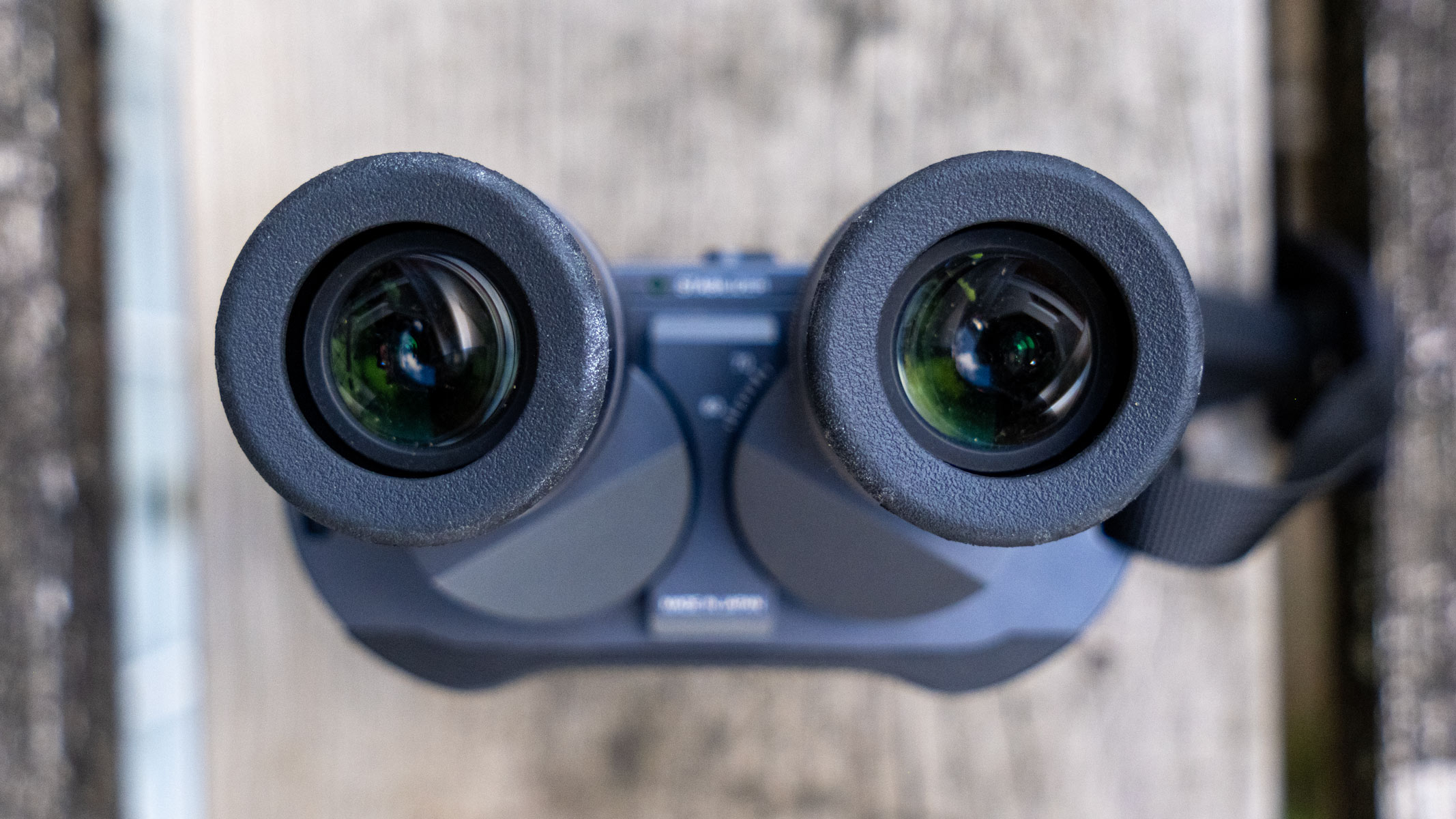
The eyepieces jut out from the body in separate housing and have an interpupillary adjustment of 56-70mm, making them suitable for a wide range of users. You have to twist each eyecup at the same time to move the distance to prevent slipping during observation.
The eye relief on the TS-L 1640 binoculars comes in at 15.7mm, providing ample space for eyeglass wearers who may need more space to see the full image without vignetting. The diopter adjustment is also easily adjusted on the right eyepiece to compensate for the difference in focus between your left and right eyes.
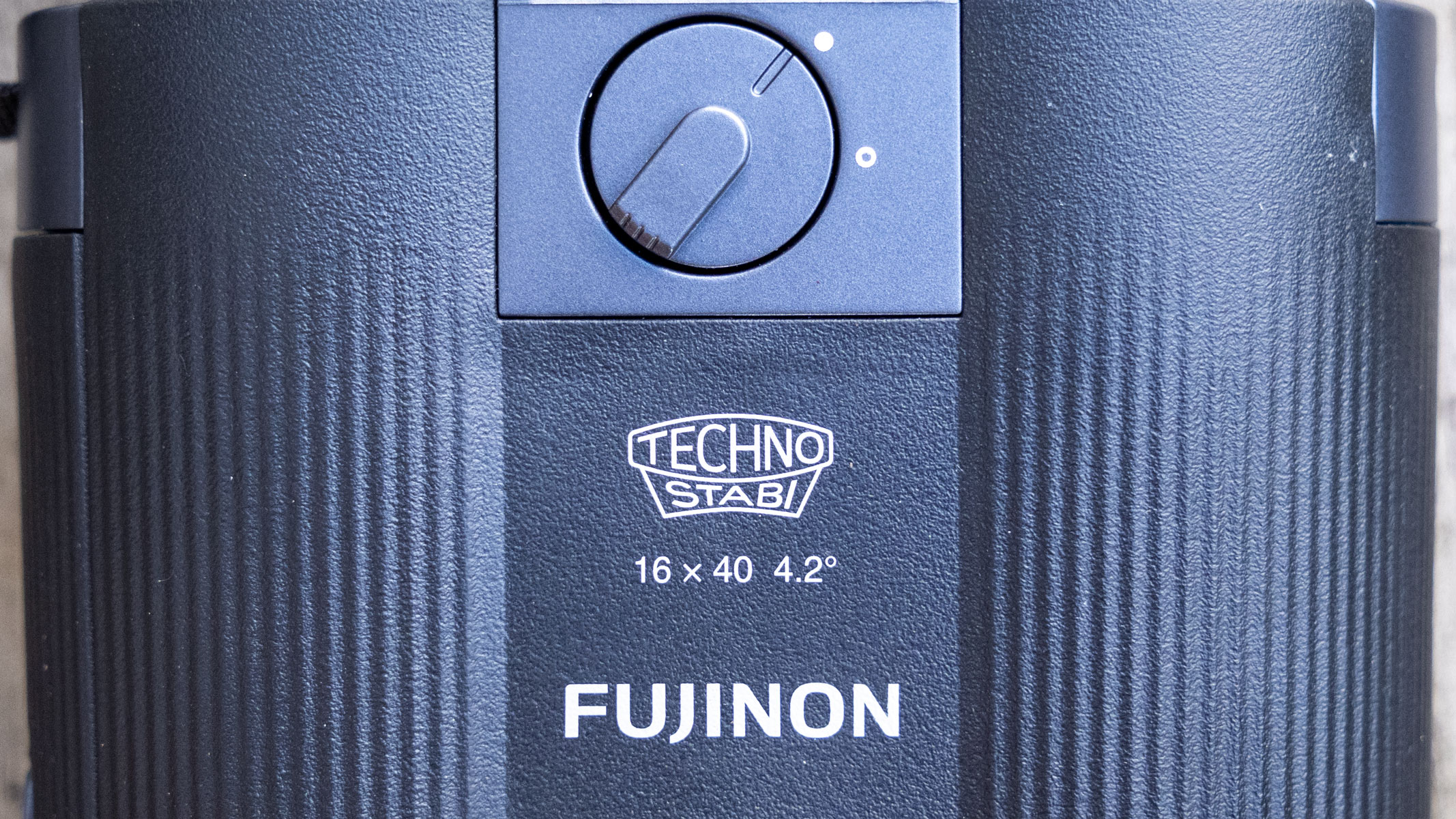
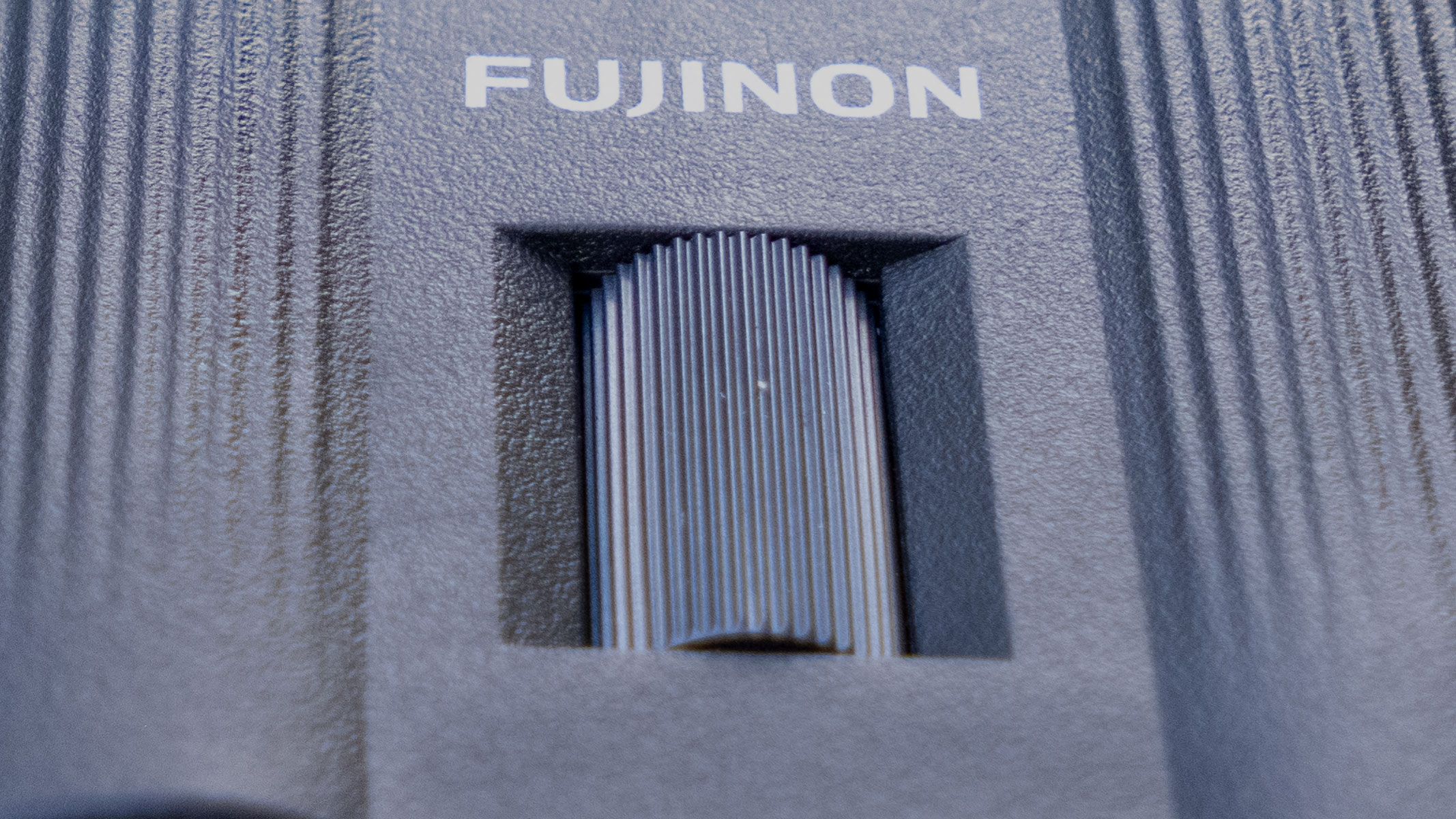
The image stabilization (IS) switch is intuitive and sits just in front of the eyepieces during observation, where I could use my right index finger to turn it on. Some users may prefer a button-activated image stabilization system, especially if they are planning on using these binoculars in freezing temperatures, but I found no issues with usability when out in the field.
The body is ergonomic but sturdy and features a ribbed plastic housing and a bottom rubber grip for good handheld use. To keep everything as slimline as possible, the focusing wheel is embedded in the middle of the body and stays flat, so it stashes away easily during travel.
Fujinon Techno-Stabi TS-L 1640: Performance
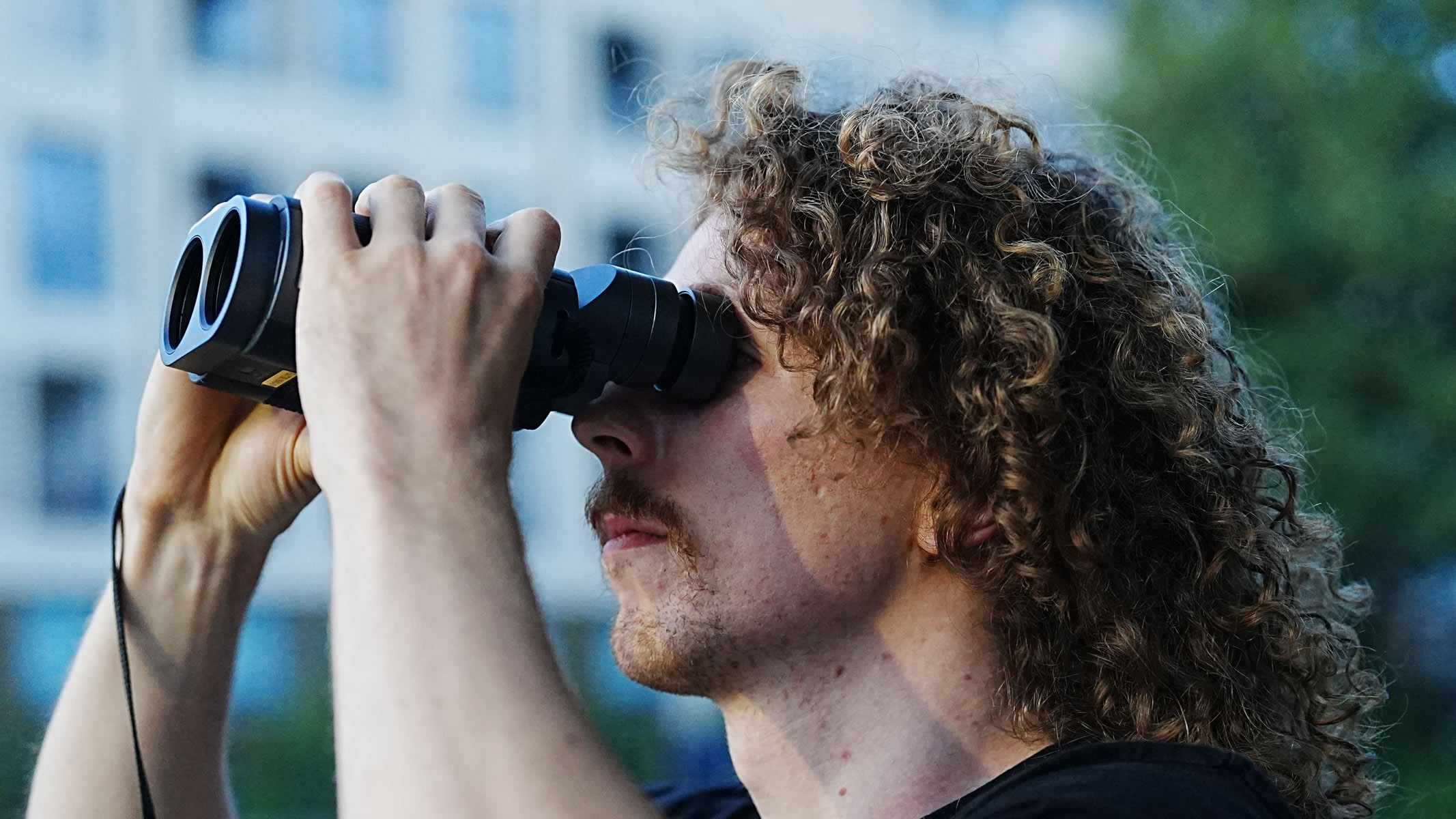
- Sharp light transmission
- Smooth image stabilized stargazing
- Stiff focus wheel
Whilst only having 40mm objective lenses, the image from the TS-L 1640 is still nice and bright for general stargazing and terrestrial viewing. This is thanks to the phase correction lens coatings, which help to produce a sharper and brighter image. Any chromatic aberration was kept under control by extra-low dispersion glass (ED) and gave me clear views of my targets.
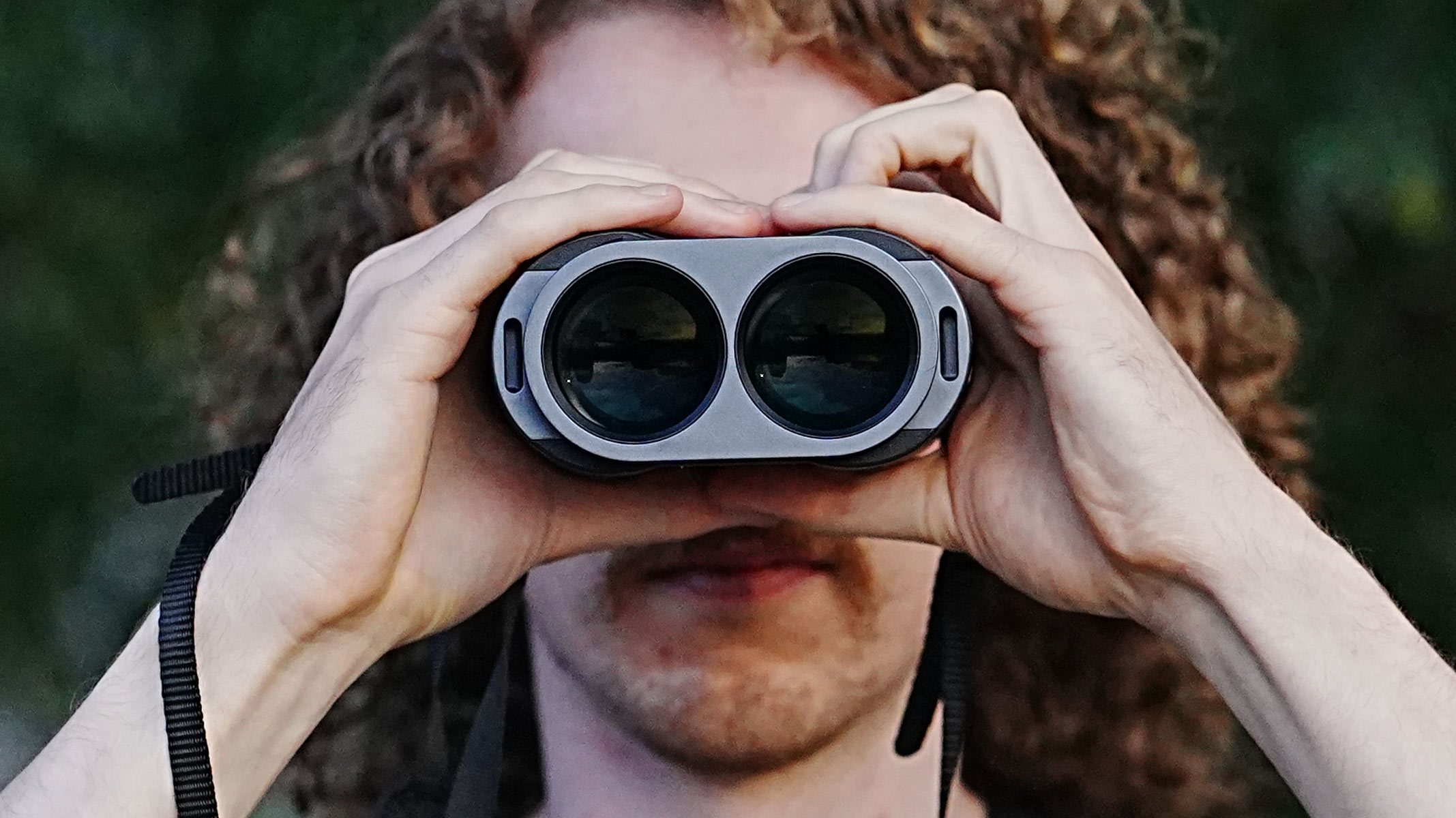
Using the binoculars handheld without the image stabilization (IS) engaged is understandably shaky, but once the IS is activated, the image stabilizes and provides a still view of wherever you are looking. This is immensely valuable when you are stargazing and trying to locate certain sky objects like star clusters and galaxies.
I observed stars in northern asterisms such as the Big Dipper and the Northern Cross, but found that these binoculars are not suitable for super-wide field-of-view observations of the full constellations Ursa Major and Cygnus. Panning across the sky in a smooth motion from the IS makes manual star location much easier and is good for star hopping your way along a larger constellation and getting views of smaller objects.
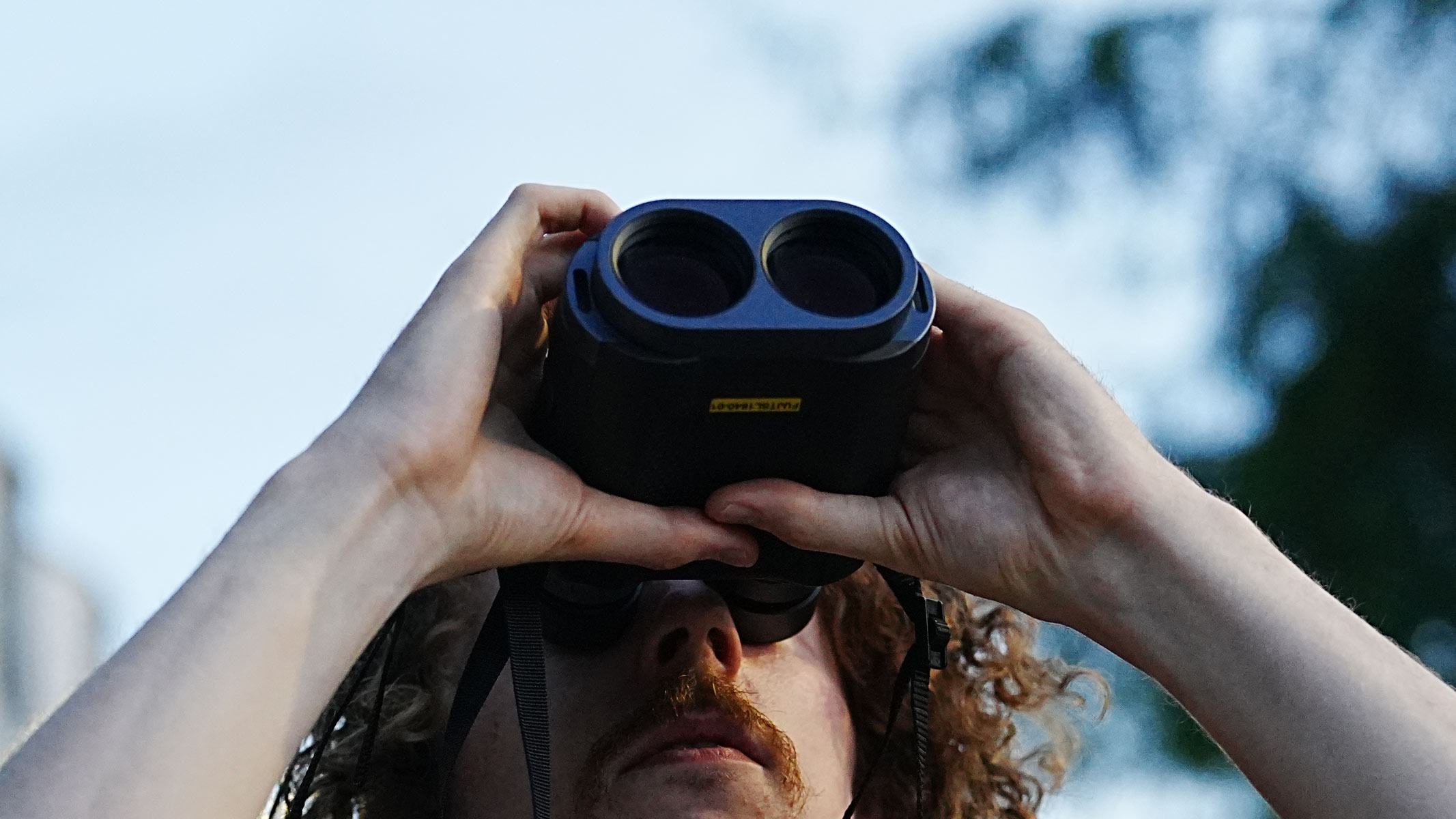


My highlights were the Pleiades star cluster, followed by Aldebaran in Taurus and the Alpha Persei cluster in Perseus, with the brightest star Mirfak. I observed the Andromeda Galaxy (M31), but it remained a smudge in the sky due to light pollution and 40mm objective lenses, which couldn’t collect as much light for fainter objects. It is worth mentioning that when focusing, I had to move my hands from the holding position so my fingers could reach the focusing wheel and it felt stiffer than models with a more prominent focusing wheel.
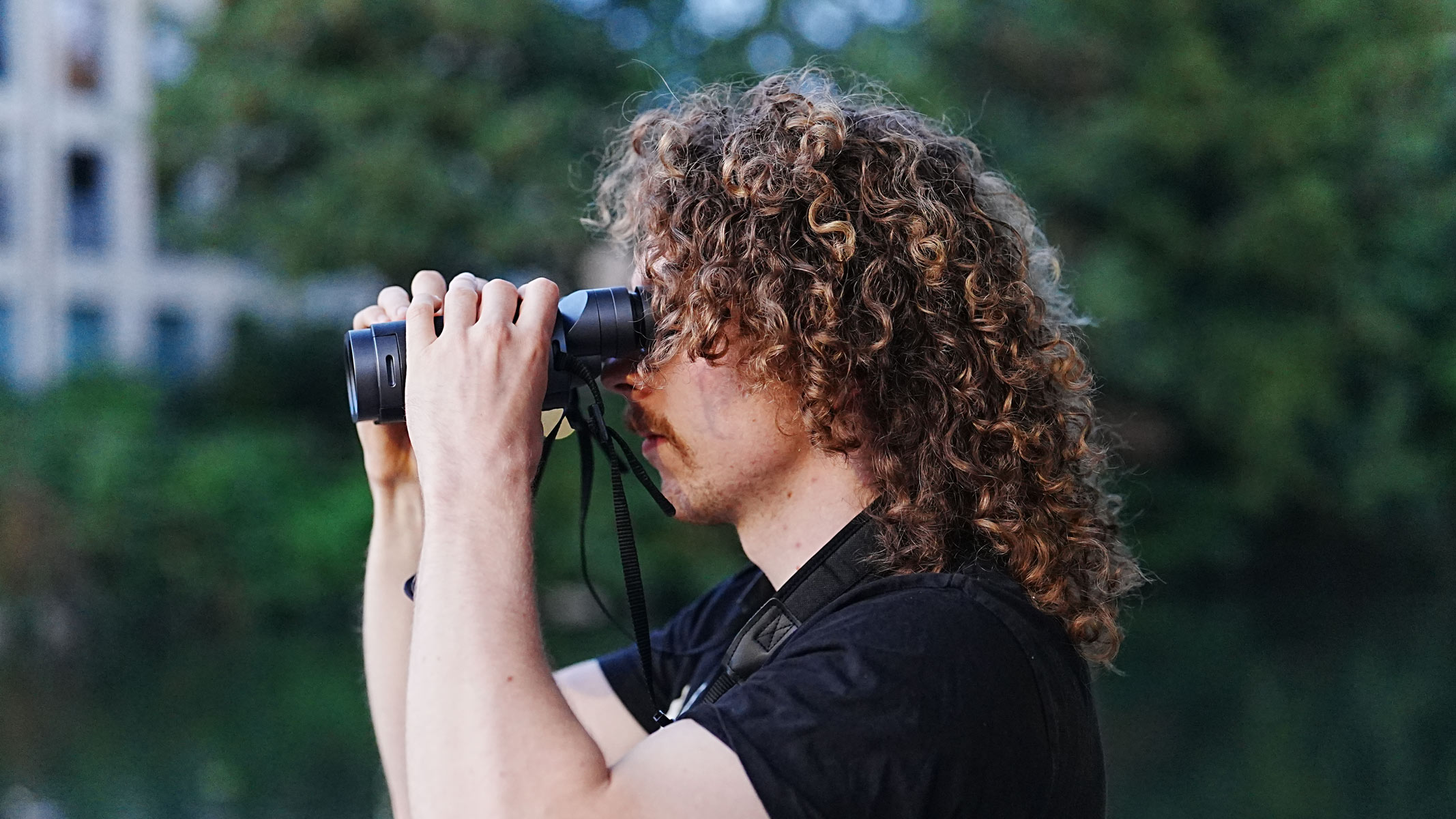
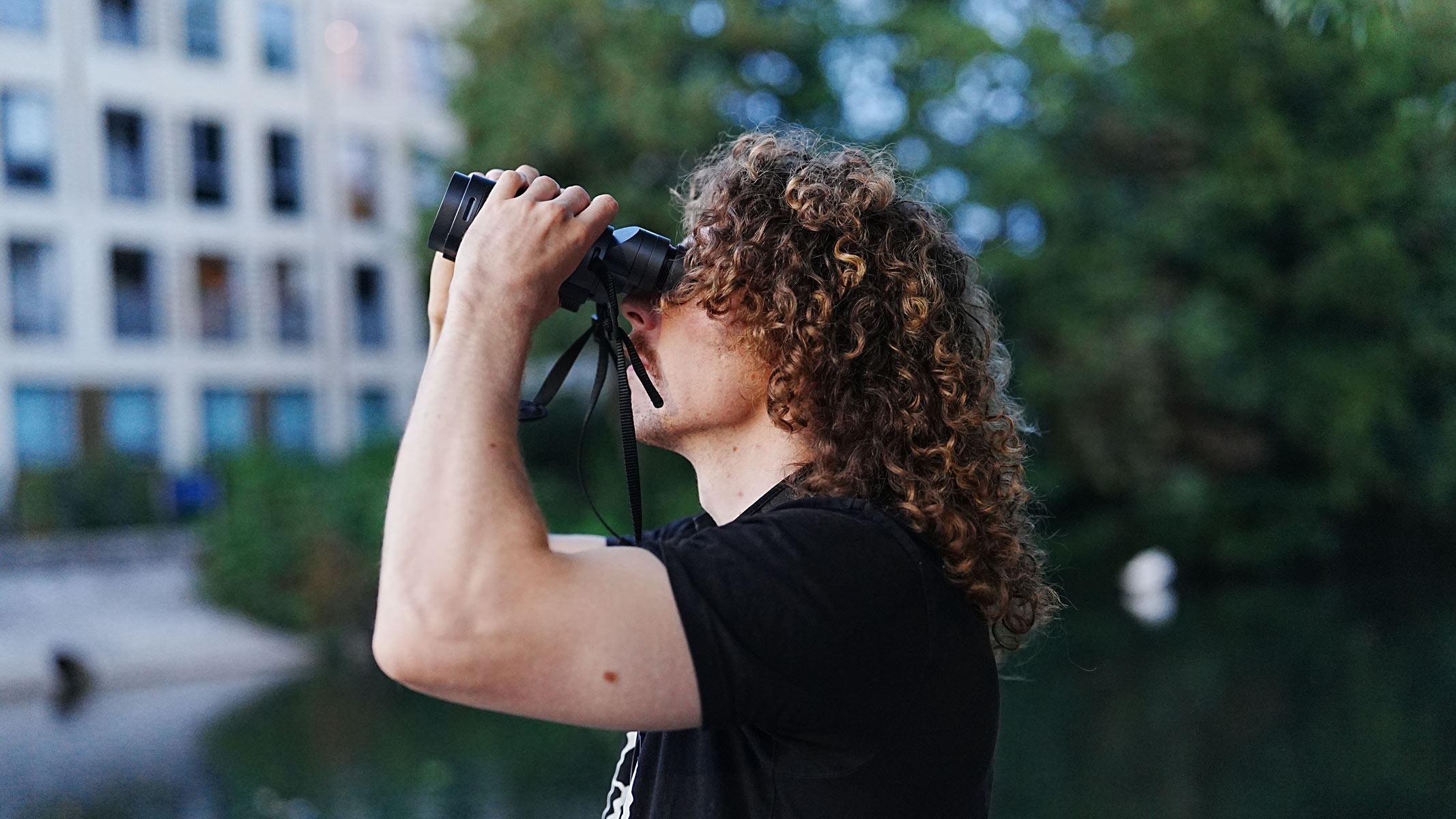
16x magnification also makes the moon a beautiful target with the full lunar disk visible and detailed views of craters and seas. A wobble-free lunar view feels like a luxury experience and you won’t want to have a pair of high magnification binoculars without IS ever again. They also worked wonders during terrestrial viewing of the landscape and looking over a city from a viewing point. Nature watchers will also benefit from the IS, as it makes it easy to track flying birds and individual creatures.
In places with light pollution, the binoculars still held up thanks to the strong magnification and extra-low-dispersion (ED) phase-coated glass, which helped to keep stars well contrasted in the view.
Fujinon Techno-Stabi TS-L 1640: Functionality

- Long battery life
- Strong image stabilization
- IPX7 waterproofing
The binoculars take two AAA batteries, with Fujifilm claiming a battery life of 30 hours of continuous use. During my month of testing, I didn’t have to change the batteries and I used them for long sessions stargazing as well as during the day for terrestrial use. I always turn the image stabilization (IS) off when not in use anyway to make the battery life go even further. The battery compartment is sleek on the side of the housing and access is controlled by a screw part that loosens the compartment flap. After insertion, the compartment tightens up and is almost invisible when in use, meaning you don’t have to worry about knocking it when out observing.

Turning the IS on and off is easy, as the switch is just in front of the eyecups. The change is noticeable immediately as shaky views of your targets become smooth views panning across your area of observation. Not only does it benefit stargazers for careful star and object identification, but helps with views of moving subjects like animals, people and vehicles. You start to forget that these binoculars are so high magnification because of how stable the views are during handheld use. When IS is active, a small green LED lights up in between the eyecups so you can make sure to turn it off when not in use.
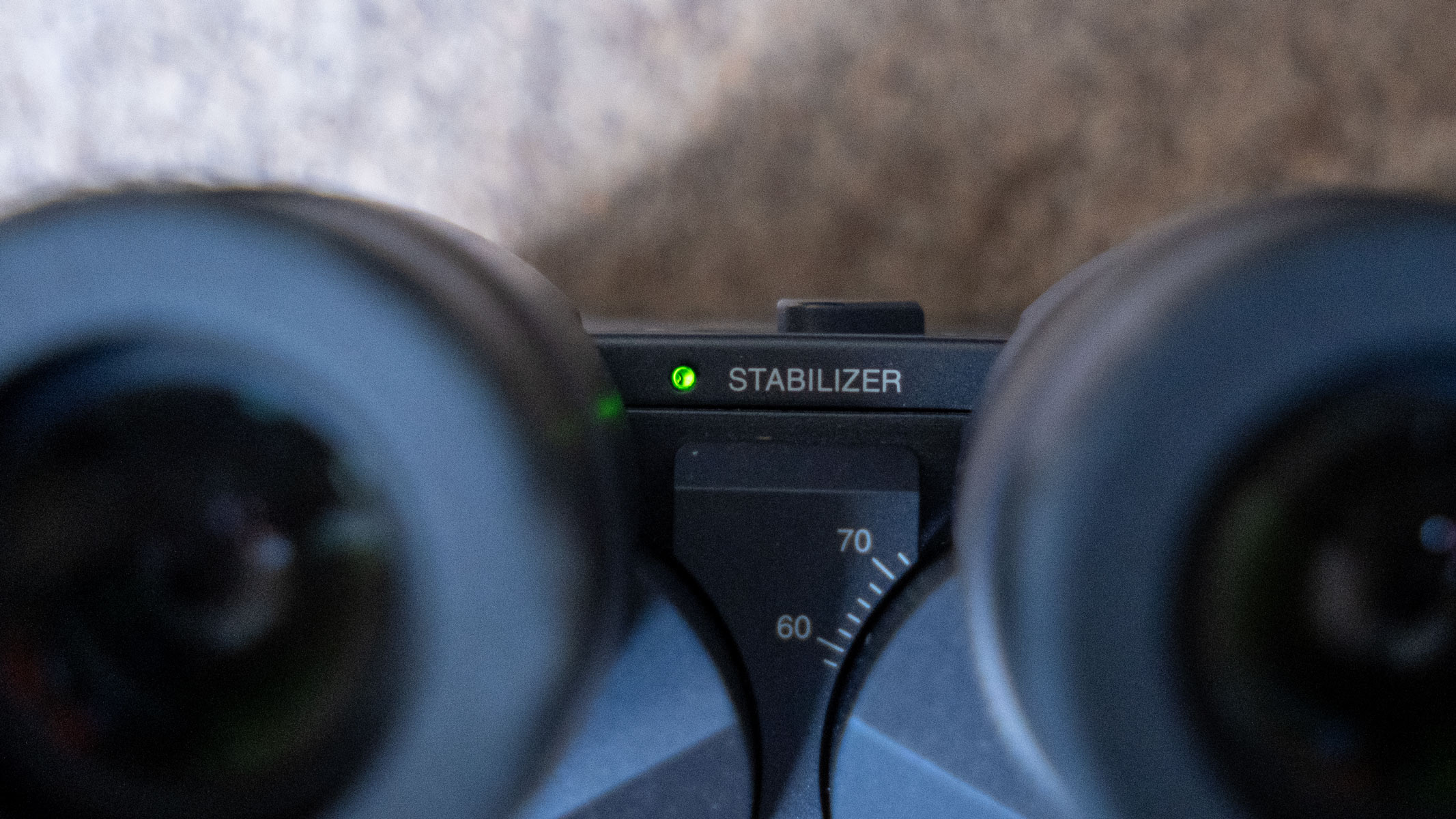

They are rated IPX7, meaning that they are waterproof to a depth of 1 meter for up to 30 minutes and work down to 14 degrees Fahrenheit (minus 10 degrees Celsius). This is serious proofing that means they excel in harsh weather conditions and naval use where submersion may be likely. Another feature that makes them good for use on boats and unsteady surfaces is the massive three degrees of image stabilization, which blows rival models’ specs out of the water.

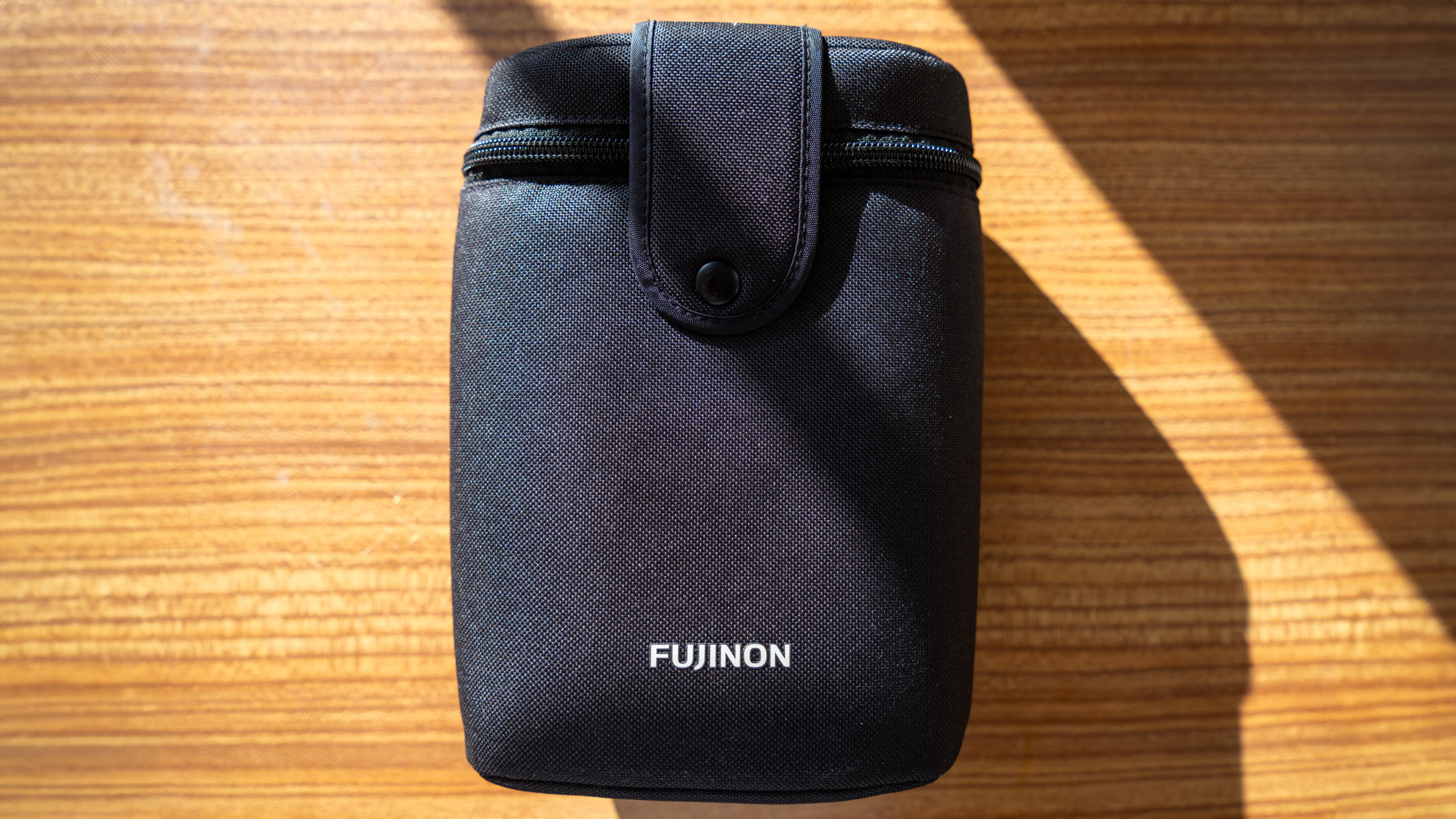

The binoculars come with an attached hand strap for holding comfort and a thick neck strap for extended observation sessions. A singular rubber lens cap is provided, but this isn’t attached to the binoculars, so watch out for misplacing it. Everything fits nicely into a small grey pouch that has a zipper and a button for secure storage while traveling or not in use.
How we tested the Fujinon Techno-Stabi TS-L 1640 binoculars
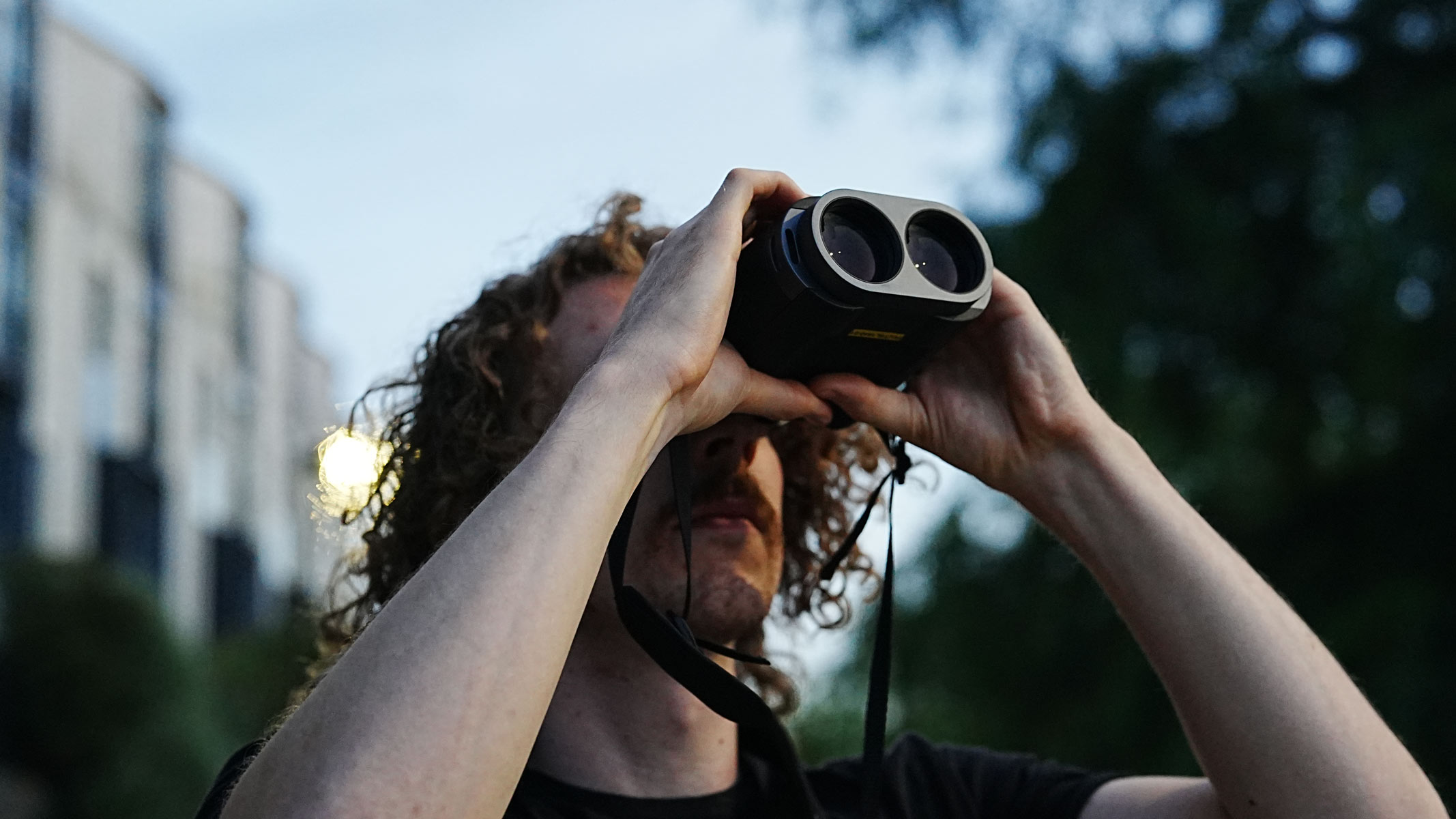
I tested the Fujinon TS-L 1640 binoculars in the fields (with lower light pollution), the city (with more light pollution) and during the day and night. For stargazing, I tested them in a field with a Bortle scale of 3 and a city center with a Bortle scale between 5 and 7. My primary observation targets were the constellation Perseus, the Pleiades star cluster, the Andromeda galaxy and the moon. For terrestrial viewing, I used them from a city lookout point, along a river for waterfowl and a park for smaller birds.
During testing in the UK, nighttime temperatures were on average between 54-59 degrees Fahrenheit (12-15 degrees Celsius).
User reviews of the Fujinon Techno-Stabi TS-L 1640 binoculars
User reviews for the TS-L 1640 are generally quite positive, with people impressed by the powerful image stabilization (IS), with some claims that it is more effective than Canon’s image stabilizing binoculars. Further benefits users report are the strong weatherproofing rating of IPX7 and crisp views even with IS activated.
Like us, some users found that the focus wheel was fairly stiff but this does mean accidental adjustments are avoided. Some users also thought that the views were dimmer in low light than their 50mm counterparts.
Should you buy the Fujinon Techno-Stabi TS-L 1640?
The perfect user for the Fujinon Techno-Stabi TS-L 1640 image stabilized binoculars is someone who loves the outdoors, whether that be trekking to dark sky sites to gaze at celestial wonders, navigating the wilderness or identifying wildlife from a distance. Their lightweightness and adherence to an IPX7 rating make them ideal for bringing on outdoor adventures in inclement weather without weighing you down.
The high-quality optics in these binoculars mean that your views are crisp and bright, with a strong +/-3-degrees of image stabilization (IS) for stable views needed for quick handheld use or unsteady environments. If you have the budget for image stabilization, then I would definitely recommend it.
If the Fujinon Techno-Stabi TS-L 1640 isn’t for you
The Fujinon Techno-Stabi TS-L 1640 might not be for you for a number of reasons. If you are prioritizing the brightest views possible, you will want to get a pair of image stabilized binoculars with large objective lenses, such as the Canon IS 15×50 binoculars or a model that has even more magnification, the Canon IS 18×50 binoculars.
If you aren’t bothered about image stabilization, then I would recommend either the Celestron SkyMaster Pro 15×70 binoculars for a similar power but with larger objective lenses. For those who want affordable stargazing, I would recommend the Celestron Nature DX 12×56 binoculars, which do a great job of balancing magnification and objective lens size for a relatively low price point.
Author: Harry Bennett
Source: Space.com
Reviewed By: Editorial Team



